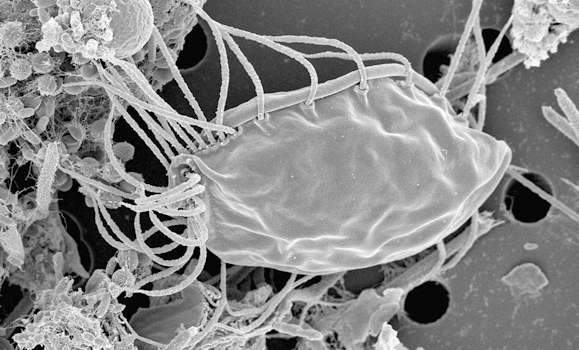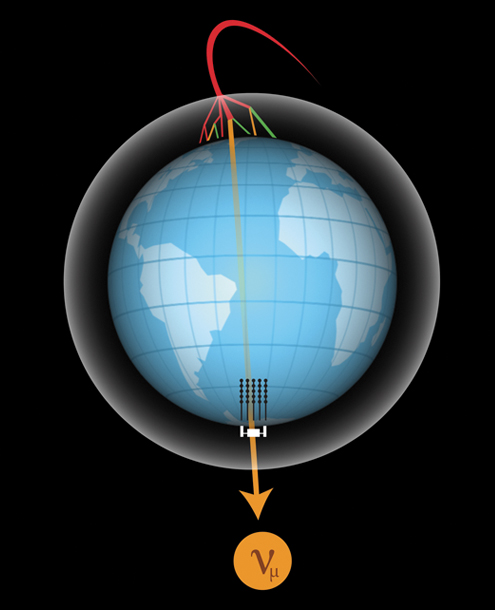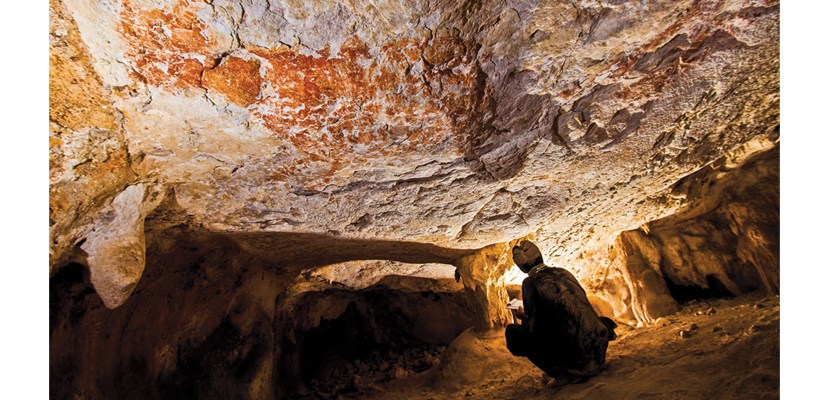
This Article From Issue
January-February 2019
Volume 107, Number 1
Page 12
In this roundup, managing editor Stacey Lutkoski summarizes notable recent developments in scientific research, selected from reports compiled in the free electronic newsletter Sigma Xi SmartBrief.
New Suprakingdom Identified
The tree of life has a new branch. Yana Eglit, a biology graduate student at Dalhousie University, collected a vial of dirt while on a hike in Novia Scotia, Canada. When she examined the sample through a microscope, she saw that it contained a rare microbe called hemimastigote. She and fellow graduate student Gordon Lax used a new technique to analyze the microbes’ genes, and they discovered that hemimastigotes are part of a previously unidentified branch of life. Biologists had thought that hemimastigotes were part of the same Opisthokonta suprakingdom as animals and fungi. This new information means that humans are more similar to mushrooms than they are to these tiny microbes.

Yana Eglit/Dalhousie University/Patricia Scallion/Electron Microscopy Core Facility Manager
Lax, G., et al. Hemimastigophora is a novel supra-kingdom-level lineage of eukaryotes. Nature doi:10.1038/s41586-018-0708-8 (November 14)
Neutrinos and Earth’s Mass

Ice Cube Collaboration
A team of physicists have used neutrinos to calculate the Earth’s mass. Neutrinos are elementary particles that are difficult to detect because they are nearly inert. The physicists used data from the IceCube neutrino detector at the South Pole to track atmospheric neutrinos as they traveled through the Earth at different angles. Some of the neutrinos were absorbed inside the Earth, and the rate of absorption varied depending on the density of the material they encountered. The physicists used these data to determine the Earth’s density at various depths and thereby calculated the planet’s mass. The innovation in the study is the methodology. In the past, scientists have determined the Earth’s mass by studying the planet’s gravitational pull and seismic waves, and the neutrinos confirmed these previous calculations. However, this new technique creates potential for future breakthroughs that would not be possible without using neutrinos, such as mapping the Earth’s core in three dimensions or searching for nonstandard matter inside the Earth.
Donini, A., S. Palomares-Ruiz, and J. Salvado. Neutrino tomography of Earth. Nature Physics doi:10.1038/s41567-018-0319-1 (November 5)
Colorful Dinosaur Eggs
Birds are the only extant species that lay colored eggs, a fact that led scientists to assume that egg pigment was an avian development. New analysis of dinosaur eggs, however, has provided evidence that nonavian theropods laid colorful eggs millions of years ago. A team of paleontologists and geologists examined a variety of dinosaur eggs using a technique called Raman spectroscopy to distinguish true egg-color pigments from the colors of other protein fossilization products. The results show that the eggs of several species of theropods—the dinosaur ancestors of birds—had the same pigments as modern birds, indicating a single evolutionary origin for egg color. The dinosaurs with pigmented eggshells also appear to have had nesting behaviors similar to those of birds with colorful eggs, such as aboveground, exposed nests. This correlation suggests the likelihood of other similarities, such as paternal care for the brood of eggs.
Wiemann, J., T.-R. Yang, and M. A. Norell. Dinosaur egg color had a single evolutionary origin. Nature doi:10.1038/s41586-018 -0646-5 (October 31)
Longterm Risks of Preeclampsia
Pregnant women who develop preeclampsia have an elevated risk of dementia later in life, according to a nationwide study in Denmark. Preeclampsia is characterized by high blood pressure, and it is a leading cause of preterm birth. Women who have a history of preeclampsia are more likely to develop other vascular problems, so researchers suspected that there might also be an increased risk of vascular dementia. Statisticians in Denmark examined national medical records from 1977 through 2015—a sample size of 1,178,005 women—and found that women who had preeclampsia were three times more likely to later develop vascular dementia and also had higher rates of Alzheimer’s disease and other types of dementia. The researchers suggest that physicians ask their patients about a history of preeclampsia so that they can provide early screening and intervention for dementia.
Basit, S., J. Wolhfahrt, and H. A. Boyd. Pre-eclampsia and risk for dementia later in life: nationwide cohort study. The BMJ doi:10.1136/bmj.k4109 (October 17)
Earliest Figurative Cave Art
Researchers have uncovered the earliest known examples of figurative art. The drawings were found in remote karsts in Borneo and are more than 40,000 years old. Archaeologists used a method of testing uranium decay in flowstone to estimate the art’s age. Flowstone is created when water seeps down a cave wall, leaving a trail of mineral deposits. By testing the flowstone in front of and behind the drawings, the team determined the minimum and maximum age of the cave art: between 40,000 and 52,000 years old. Although the Bornean drawings are the oldest known figurative art, they are close in age to the earliest examples of representative art found in Europe, which are dated to just under 40,000 years old. This discovery indicates that early humans on opposite sides of the Earth were developing figurative art at about the same time.

Pindi Setiawan
Aubert, M., et al. Palaeolithic cave art in Borneo. Nature doi:10.1038/s41586-018-0679-9 (November 7)

American Scientist Comments and Discussion
To discuss our articles or comment on them, please share them and tag American Scientist on social media platforms. Here are links to our profiles on Twitter, Facebook, and LinkedIn.
If we re-share your post, we will moderate comments/discussion following our comments policy.